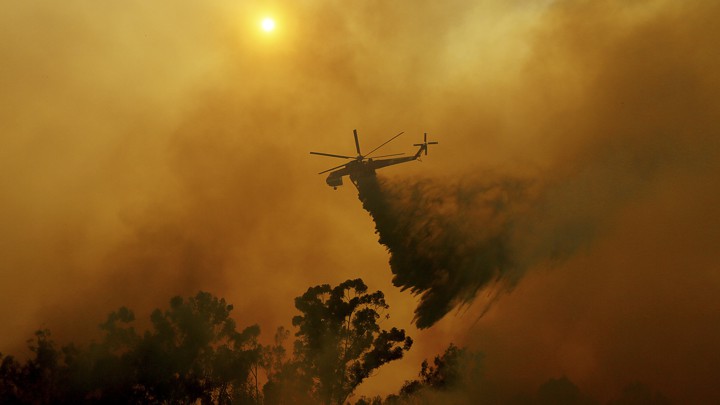Global warming may have turned an already historic dry spell into the third-worst drought of the past 1,000 years.

Climate change seems to be driving a good chunk of the problem. “The current drought is substantially worse than it would have been without global warming,” Williams said. The drought was 62 percent more severe than it would have been, he said, due to human-caused climate change.*
“The drought in the Southwest is now in its 19th year. So it’s right on the cusp of technically being a mega-drought,” Overpeck told me.
The current drought is “relentless,” he said, with consequences that reverberate across the West. “It’s reflected in the levels of Lake Mead and Lake Powell, the two largest reservoirs in our country … You see it in the way the forests are outright dying in some places, in big insect outbreaks as [plants] are weakened by a lack of moisture in the soil, in more catastrophic wildfires. There’s a lot of signs this drought is unusual.”
He said that two different events seem to be driving the crisis. First, the region is receiving less rain than normal. Second, the Southwest as a whole is systematically warming up and drying out. It’s becoming a more desertlike place, a process that scientists call aridification. “Most of the work points to aridification being dominant” in driving the modern drought, Overpeck said.
The new work from Williams and his colleagues may support the same idea. They began by looking at the climatic record preserved in tens of thousands of tree rings across the American West. By using a simple form of machine learning on that data and calibrating it to modern weather records they pieced together the past 1,200 years of soil moisture in the West. (Williams’s team includes Ed Cook, who practically invented the modern study of tree rings.)
Consulting this record, they found that the current drought does not perfectly resemble historic mega-droughts. While previous droughts were concentrated in just one or two places in the West, the current drought covers almost half of the country. Climate models suggest that this huge territorial extent may be caused by the extreme heat and dry air that’s plagued western states in the past few decades. “What may have just been a drought in the Southwest is now a drought across the entire study region,” Williams said at the conference.
Overpeck agreed. “The warming is having a huge effect—a huge effect on water resources and a huge effect on forests,” he said. “People knew there would be an effect, but we didn’t know it would come this big, and this fast.”

Leave A Comment